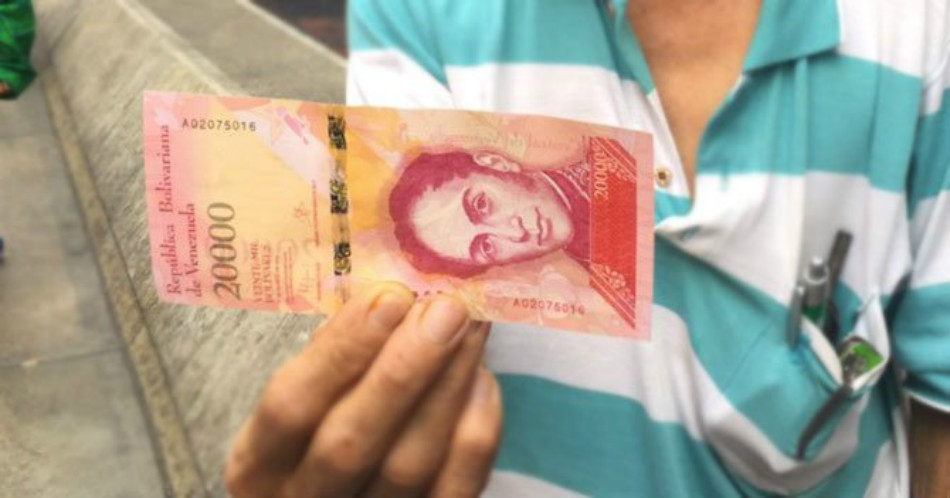
EspañolNew currency began circulating in Venezuela this week, the 500, 5,000 and 20,000 bolivar notes appearing first and which, many have pointed out, are barely enough to purchase even the cheapest of items.
The bolivar has maintained this image for some time now, an impoverished effigy to what it once was. At one time, the 100 bolivar note was the highest denomination, and while today it is the 20,000 note, neither was able to purchase much at the time of their release date.
Prometidos para el 15 de diciembre de 2016. Hoy empiezan a verse los nuevos billetes. pic.twitter.com/jC0CWsVBOo
— Rafael Hernández (@sincepto) January 16, 2017
Reflected in Venezuela’s rampant economic crisis is this devastating devaluation and hyperinflation. Prices have doubled every 17 days. Now, the 20,000 bolivar note can only buy, for example, two Big Macs at McDonalds.
The sandwich costs about 8,000 bolivars now, though two weeks ago it cost six. You can, however, buy six ice cream sundaes instead, but if you’re in the mood for a different meal, there aren’t many other places to go. The cost of an average lunch in Venezuela is already around 10,ooo bolivars.
A kilo of yellow cheese can cost, in some places, up to 17 thousand bolivars. In December, for example, a Christmas ham cost more than ten thousand bolivars.
For now, the currency used in Venezuela may only buy two Big Macs, but very soon it may not even be able to do that.
 Versión Español
Versión Español












